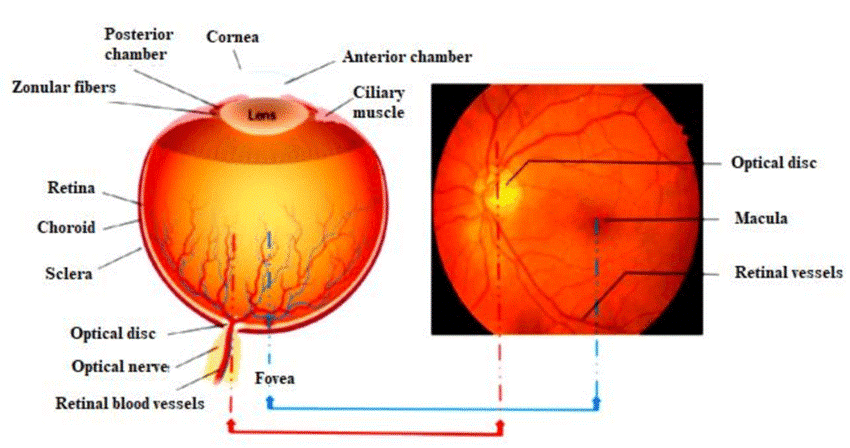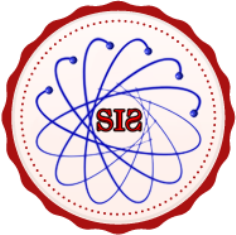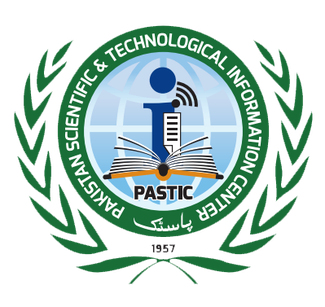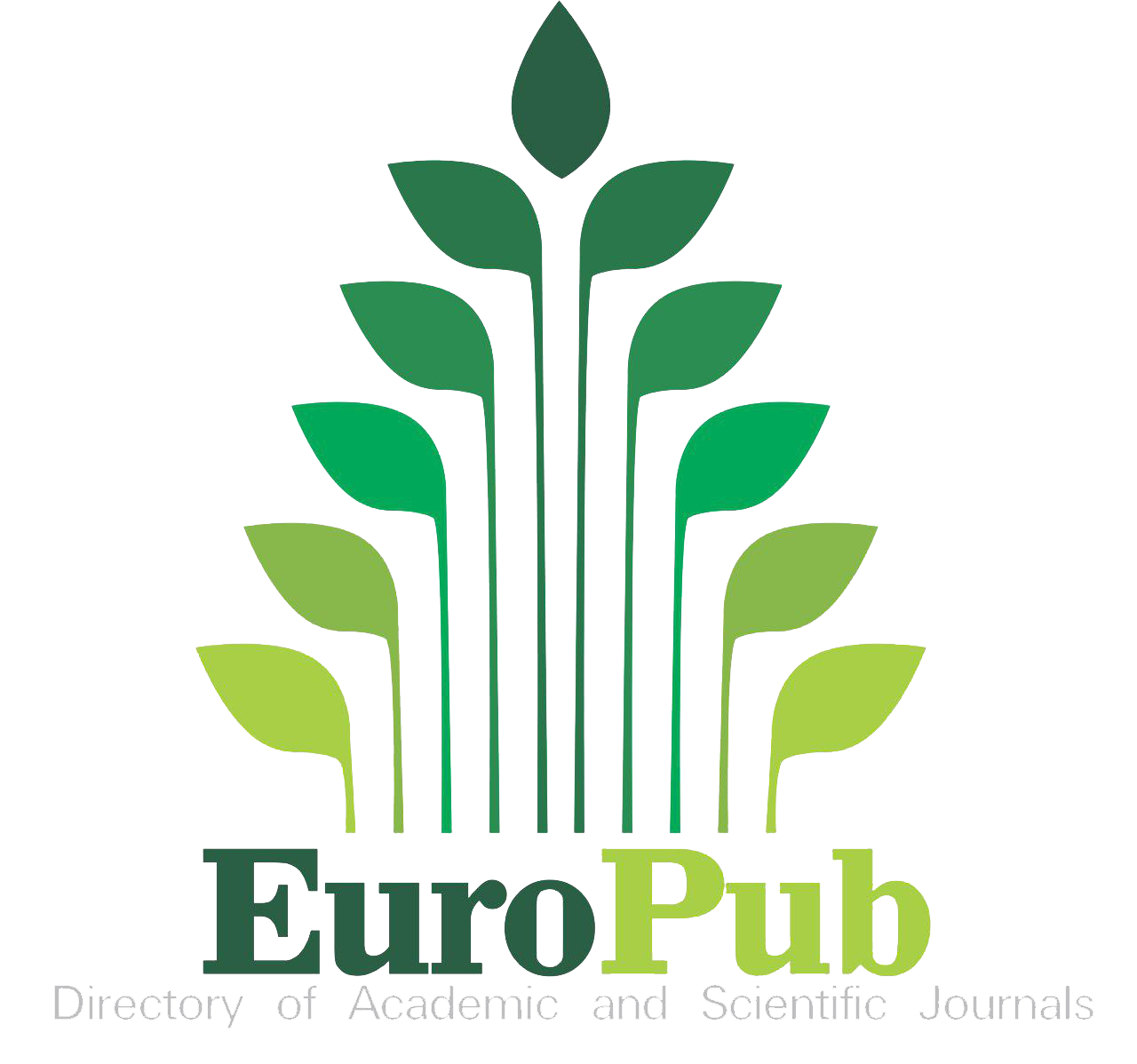Digital Retinal Fundus Imaging: An AI-Assisted Effective Machine Learning Model for Detecting Ocular Pathology
Keywords:
Ocular Pathology, Retinal Fundus Imaging, Deep Learning, Bag of Deep Features, Mutual InformationAbstract
Ocular pathology is the study of employing digital fundus imaging to diagnose various eye-related diseases. Macular degeneration, cataracts, glaucoma, and diabetic retinopathy are among these eye diseases. To distinguish between these illnesses, a manual examination of the human eye is performed. Since the work is arduous, we have used many complex machine learning techniques in this paper to automatically identify eye disorders using digital retinal fundus imaging. In our initial stage, the dataset is de-noised to avoid misclassification. Additionally, we use Contrasted Limited Adaptive Histogram Equalization (CLAHE) to enhance the images. By adjusting the histograms' adaptive equalization parameters, it is possible to improve the fundus image on each of the RGB channels separately. With the help of three distinct deep CNN models; AlexNet, GoogLeNet, and ResNet50, high-quality features were extracted in the second phase. After merging the features, a composite feature vector was created. This is done to choose characteristics of superior quality. The Bag of Deep Features (BoDF) was used to choose features of the highest caliber. BoDF will assist in lowering the size of the feature so that it can be recognized quickly. Using Mutual Information (MI), comparable features were also eliminated. Support Vector Machine (SVM) and Decision Tree (DT) were then used to classify the model's output to identify ocular diseases. The STARE dataset is used in this research. When compared to current state-of-the-art models, the proposed model is more appropriate and provides an overall classification performance of 94.8% in almost 3 seconds.
References
A. R. Majeed, W. A. Awan, N. Ul Hassan, M. A. Asghar, and M. J. Khan, “Retinal Fundus Image Refinement with Contrast Limited Adaptive Histogram Equalization, Noise Filtration and Intensity Adjustment,” Proc. - 2020 23rd IEEE Int. Multi-Topic Conf. INMIC 2020, Nov. 2020, doi: 10.1109/INMIC50486.2020.9318104.
A. Shabbir et al., “Detection of glaucoma using retinal fundus images: A comprehensive review,” Math. Biosci. Eng. 2021 32033, vol. 18, no. 3, pp. 2033–2076, 2021, doi: 10.3934/MBE.2021106.
M. S. A. Ahsan Bin Tufail, Inam Ullah, Wali Ullah Khan, Muhammad Asif, Ijaz Ahmad, Yong-Kui Ma, Rahim Khan, Kalimullah, “Diagnosis of Diabetic Retinopathy through Retinal Fundus Images and 3D Convolutional Neural Networks with Limited Number of Samples,” Wirel. Commun. Mob. Comput., 2021, doi: https://doi.org/10.1155/2021/6013448.
S. V. G.R. Sreekanth , R.S.Latha, R.C.Suganthe, S.Sivakumar, N.Swathi, K.Sonasri, “Automated Detection and Classification of Diabetic Retinopathy and Diabetic Macular Edema in Retinal Fundus Images Using Deep Learning Approach,” NVEO – Nat. Volatiles Essent. Oils, vol. 8, no. 5, 2021, [Online]. Available: https://www.nveo.org/index.php/journal/article/view/325
Y. Han et al., “Application of an anomaly detection model to screen for ocular diseases using color retinal fundus images: Design and evaluation study,” J. Med. Internet Res., vol. 23, no. 7, p. e27822, Jul. 2021, doi: 10.2196/27822.
J. Nayak, P. S. Bhat, R. Acharya U, C. M. Lim, and M. Kagathi, “Automated identification of diabetic retinopathy stages using digital fundus images,” J. Med. Syst., vol. 32, no. 2, pp. 107–115, Apr. 2008, doi: 10.1007/S10916-007-9113-9/METRICS.
Early Treatment Diabetic Retinopathy Study Research Group, “PHOTOCOAGULATION FOR DIABETIC MACULAR EDEMA: EARLY TREATMENT DIABETIC RETINOPATHY STUDY REPORT NO. 4,” Int. Ophthalmol. Clin., vol. 27, no. 4, pp. 265–272, 1987, [Online]. Available: https://journals.lww.com/internat-ophthalmology/citation/1987/02740/photocoagulation_for_diabetic_macular_edema__early.6.aspx
F. L. Ferris, “How Effective Are Treatments for Diabetic Retinopathy?,” JAMA, vol. 269, no. 10, pp. 1290–1291, Mar. 1993, doi: 10.1001/JAMA.1993.03500100088034.
G. T. R Williams,S Nussey,R Humphry, “Assessment of non-mydriatic fundus photography in detection of diabetic retinopathy.,” Br Med J (Clin Res Ed), vol. 293, 1986, doi: https://doi.org/10.1136/bmj.293.6555.1140.
E. R. Higgs, B. A. Harney, A. Kelleher, and J. P. D. Reckless, “Detection of Diabetic Retinopathy in the Community Using a Non‐mydriatic Camera,” Diabet. Med., vol. 8, no. 6, pp. 551–555, Jul. 1991, doi: 10.1111/J.1464-5491.1991.TB01650.X;WGROUP:STRING:PUBLICATION.
7th edition Millodot: Dictionary of Optometry and Visual Science, “ocular pathology,” Free Dict., 2009, [Online]. Available: https://medical-dictionary.thefreedictionary.com/ocular+pathology
E. B. R. and G. R. N. M. C. V. Stella Mary, “Retinal Fundus Image Analysis for Diagnosis of Glaucoma: A Comprehensive Survey,” IEEE Access, vol. 4, pp. 4327–4354, 2016, [Online]. Available: https://ieeexplore.ieee.org/document/7536180
N. H. Butt, M. H. Ayub, and M. H. Ali, “Challenges in the management of glaucoma in developing countries,” Taiwan J. Ophthalmol., vol. 6, no. 3, pp. 119–122, 2016, [Online]. Available: https://www.sciencedirect.com/science/article/pii/S2211505616000090?via%3Dihub
J. M. & K. W. Rubina Sarki, Khandakar Ahmed, Hua Wang, Yanchun Zhang, “Image Preprocessing in Classification and Identification of Diabetic Eye Diseases,” Data Sci. Eng., vol. 6, pp. 455–47, 2021, [Online]. Available: https://link.springer.com/article/10.1007/s41019-021-00167-z
D. R. Parashar and D. K. Agarwal, “SVM based Supervised Machine Learning Framework for Glaucoma Classification using Retinal Fundus Images,” Proc. - 2021 IEEE 10th Int. Conf. Commun. Syst. Netw. Technol. CSNT 2021, pp. 660–663, 2021, doi: 10.1109/CSNT51715.2021.9509708.
T. N. Guangzhou An, Kazuko Omodaka, Kazuki Hashimoto, Satoru Tsuda, Yukihiro Shiga, Naoko Takada, Tsutomu Kikawa, Hideo Yokota, Masahiro Akiba, “Glaucoma Diagnosis with Machine Learning Based on Optical Coherence Tomography and Color Fundus Images,” J. Healthc. Eng., 2019, [Online]. Available: https://onlinelibrary.wiley.com/doi/10.1155/2019/4061313
G. An et al., “Comparison of Machine-Learning Classification Models for Glaucoma Management,” J. Healthc. Eng., vol. 2018, Jun. 2018, doi: 10.1155/2018/6874765.
I. T. N. and R. K. M. T. Islam, S. T. Mashfu, A. Faisal, S. C. Siam, “Deep Learning-Based Glaucoma Detection With Cropped Optic Cup and Disc and Blood Vessel Segmentation,” IEEE Access, vol. 10, pp. 2828–2841, 2022, [Online]. Available: https://ieeexplore.ieee.org/document/9664528
M. Chetoui, M. A. Akhloufi, and M. Kardouchi, “Diabetic Retinopathy Detection Using Machine Learning and Texture Features,” Can. Conf. Electr. Comput. Eng., vol. 2018-May, Aug. 2018, doi: 10.1109/CCECE.2018.8447809.
P. M. Nergis C. Khan, Chandrashan Perera, Eliot R. Dow, Karen M. Chen, Vinit B. Mahajan, “Predicting Systemic Health Features from Retinal Fundus Images Using Transfer-Learning-Based Artificial Intelligence Models,” Diagnostics, vol. 12, no. 7, p. 1714, 2022, doi: https://doi.org/10.3390/diagnostics12071714.
Tae Keun Yoo; Bo Yi Kim; Hyun Kyo Jeong; Hong Kyu Kim; Donghyun Yang; Ik Hee Ryu, “Simple Code Implementation for Deep Learning–Based Segmentation to Evaluate Central Serous Chorioretinopathy in Fundus Photography,” Transl. Vis. Sci. Technol., vol. 11, no. 22, 2022, [Online]. Available: https://tvst.arvojournals.org/article.aspx?articleid=2778499
J. M. Arun Das, Paul Rad, Kim-Kwang Raymond Choo, Babak Nouhi, Jonathan Lish, “Distributed machine learning cloud teleophthalmology IoT for predicting AMD disease progression,” Futur. Gener. Comput. Syst., vol. 93, pp. 486–498, 2019, [Online]. Available: https://www.sciencedirect.com/science/article/abs/pii/S0167739X18317941?via%3Dihub
M. K. Sidong Liu, Stuart L. Graham FRANZCO, Angela Schulz and B. Zangerl, “A Deep Learning-Based Algorithm Identifies Glaucomatous Discs Using Monoscopic Fundus Photographs,” Ophthalmol. Glaucoma, vol. 1, no. 1, pp. 15–22, 2018, [Online]. Available: https://www.sciencedirect.com/science/article/abs/pii/S2589419618300127?via%3Dihub
X. Luo, J. Li, M. Chen, X. Yang, and X. Li, “Ophthalmic Disease Detection via Deep Learning with a Novel Mixture Loss Function,” IEEE J. Biomed. Heal. Informatics, vol. 25, no. 9, pp. 3332–3339, Sep. 2021, doi: 10.1109/JBHI.2021.3083605.
A. Al-Zebari and A. Sengur, “Performance Comparison of Machine Learning Techniques on Diabetes Disease Detection,” 1st Int. Informatics Softw. Eng. Conf. Innov. Technol. Digit. Transform. IISEC 2019 - Proc., Nov. 2019, doi: 10.1109/UBMYK48245.2019.8965542.
“Erratum: Promising Artificial Intelligence—Machine Learning–Deep Learning Algorithms in Ophthalmology: Erratum (Asia-Pacific Journal of Ophthalmology (2019) 8(3) (264–272), (S2162098923005066), (10.22608/APO.2018479)),” Asia-Pacific J. Ophthalmol., vol. 8, no. 5, p. 417, Sep. 2019, doi: 10.1097/01.APO.0000586388.81551.D0.
Z. W. & H. Z. Feng Li, Yuguang Wang, Tianyi Xu, Lin Dong, Lei Yan, Minshan Jiang, Xuedian Zhang, Hong Jiang, “Deep learning-based automated detection for diabetic retinopathy and diabetic macular oedema in retinal fundus photographs,” Eye, vol. 36, pp. 1433–1441, 2022, [Online]. Available: https://www.nature.com/articles/s41433-021-01552-8
L. W. & W. H. Li Lu, Enliang Zhou, Wangshu Yu, Bin Chen, Peifang Ren, Qianyi Lu, Dian Qin, Lixian Lu, Qin He, Xuyuan Tang, Miaomiao Zhu, “Development of deep learning-based detecting systems for pathologic myopia using retinal fundus images,” Commun. Biol., vol. 4, no. 1225, 2021, [Online]. Available: https://www.nature.com/articles/s42003-021-02758-y
M. A. Anwer, G. A. Qattan, and A. M. Ali, “Ocular Disease Classification Using Different Kinds of Machine Learning Algorithms,” Zanco J. Pure Appl. Sci., vol. 36, no. 2, pp. 25–34, Apr. 2024, doi: 10.21271/ZJPAS.36.2.3.
M. D. Shumoos Al-Fahdawi, Alaa S. Al-Waisy, Diyar Qader Zeebaree, Rami Qahwaji, Hayder Natiq, Mazin Abed Mohammed , Jan Nedoma, Radek Martinek, “Fundus-DeepNet: Multi-label deep learning classification system for enhanced detection of multiple ocular diseases through data fusion of fundus images,” Inf. Fusion, vol. 102, p. 102059, 2024, [Online]. Available: https://www.sciencedirect.com/science/article/pii/S1566253523003755?via%3Dihub
G. R. Asadi Srinivasulu, Clement Varaprasad Karu, G Sreenivasulu, “Automatic Detection and Classification of Eye Diseases from Retinal Images Using Deep Learning: A Comprehensive Research on the ODIR Dataset,” Adv. Eng. Intell. Syst., vol. 3, no. 1, 2024, [Online]. Available: https://aeis.bilijipub.com/article_193336_5671c20ca75ae01a7050ebaacfc668e5.pdf
C. Y.-A. Laberiano Andrade-Arenas, “Advances in the diagnosis of ocular diseases: an innovative approach through an expert system,” Bull. Electr. Eng. Informatics, vol. 13, no. 4, 2024, [Online]. Available: https://doi.org/10.11591/eei.v13i4.7971
I. R. Moaz Osama Omar, Muhammed Jabran Abad Ali, Soliman Elias Qabillie, Ahmed Ibrahim Haji, Mohammed Bilal Takriti Takriti, Ahmed Hesham Atif, “Beyond Vision: Potential Role of AI-enabled Ocular Scans in the Prediction of Aging and Systemic Disorders,” Siriraj Med. J., 2024, doi: https://doi.org/10.33192/smj.v76i2.266303.
Karel Zuiderveld, “Contrast Limited Adaptive Histogram Equalization,” Graph. Gems, pp. 474–485, 1994, [Online]. Available: https://www.sciencedirect.com/science/article/abs/pii/B9780123361561500616?via%3Dihub
J. Z. Zheng-Wu Yuan, “Feature extraction and image retrieval based on AlexNet,” Eighth Int. Conf. Digit. Image Process. (ICDIP 2016), vol. 10033, 2016, [Online]. Available: https://www.spiedigitallibrary.org/conference-proceedings-of-spie/10033/1/Feature-extraction-and-image-retrieval-based-on-AlexNet/10.1117/12.2243849.full
R. A. Pedro Ballester, “On the Performance of GoogLeNet and AlexNet Applied to Sketches,” Proc. AAAI Conf. Artif. Intell., vol. 30, no. 1, 2016, [Online]. Available: https://ojs.aaai.org/index.php/AAAI/article/view/10171
L. Wen, X. Li, and L. Gao, “A transfer convolutional neural network for fault diagnosis based on ResNet-50,” Neural Comput. Appl., vol. 32, no. 10, pp. 6111–6124, May 2020, doi: 10.1007/S00521-019-04097-W/METRICS.
S. S. M. Muhammad Adeel Asghar, Muhammad Jamil Khan, Fawad, Yasar Amin, Muhammad Rizwan, MuhibUr Rahman, Salman Badnava, “EEG-Based Multi-Modal Emotion Recognition using Bag of Deep Features: An Optimal Feature Selection Approach,” Sensors, vol. 19, no. 23, p. 5218, 2019, doi: https://doi.org/10.3390/s19235218.
G. Guo, H. Wang, D. Bell, Y. Bi, and K. Greer, “KNN Model-Based Approach in Classification,” Lect. Notes Comput. Sci. (including Subser. Lect. Notes Artif. Intell. Lect. Notes Bioinformatics), vol. 2888, pp. 986–996, 2003, doi: 10.1007/978-3-540-39964-3_62.

Downloads
Published
How to Cite
Issue
Section
License
Copyright (c) 2025 50sea

This work is licensed under a Creative Commons Attribution 4.0 International License.




















